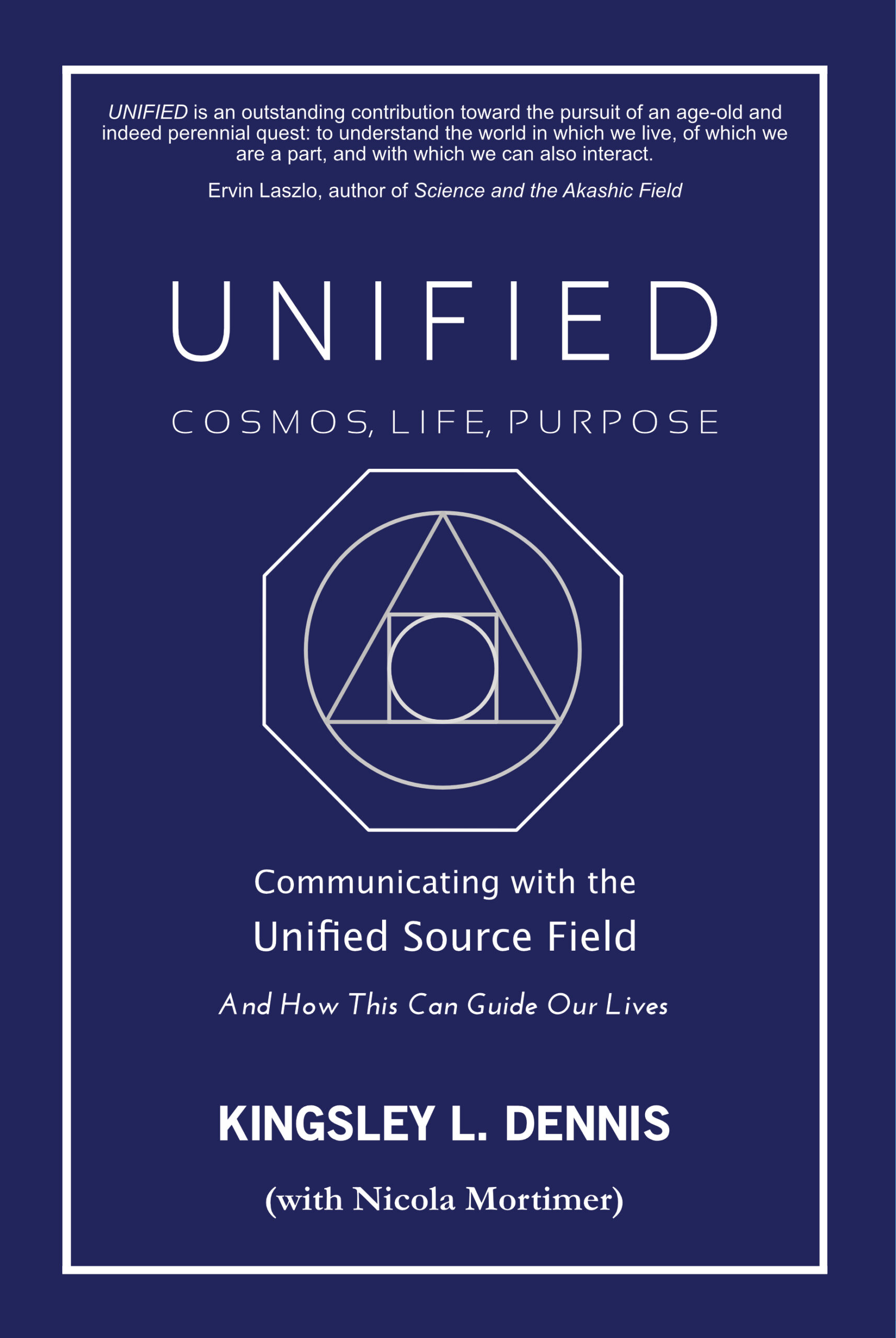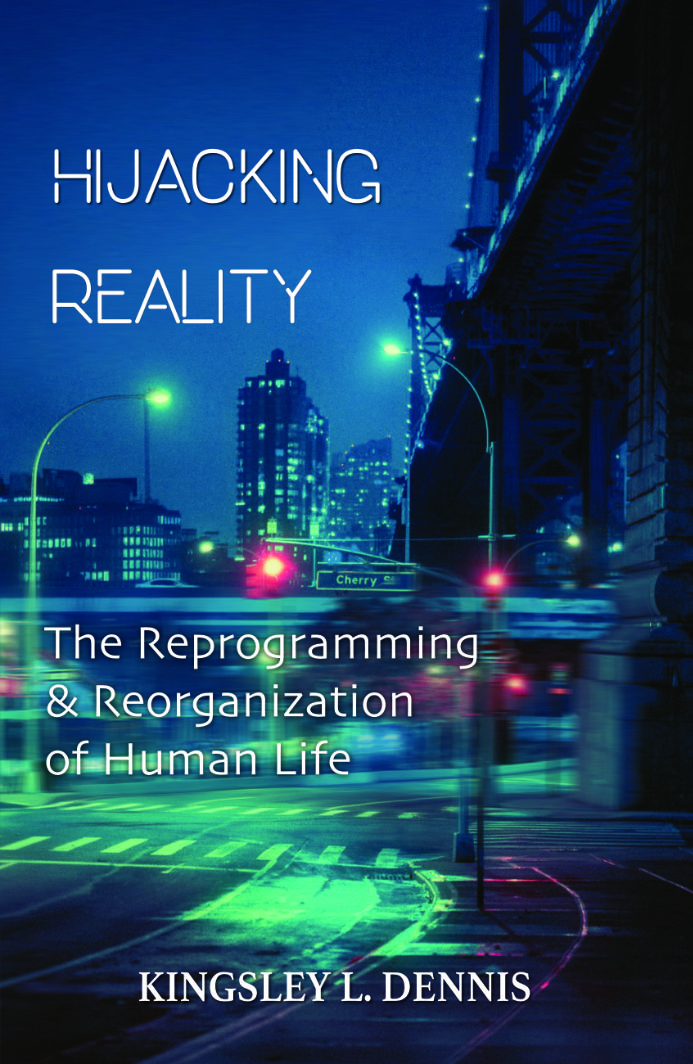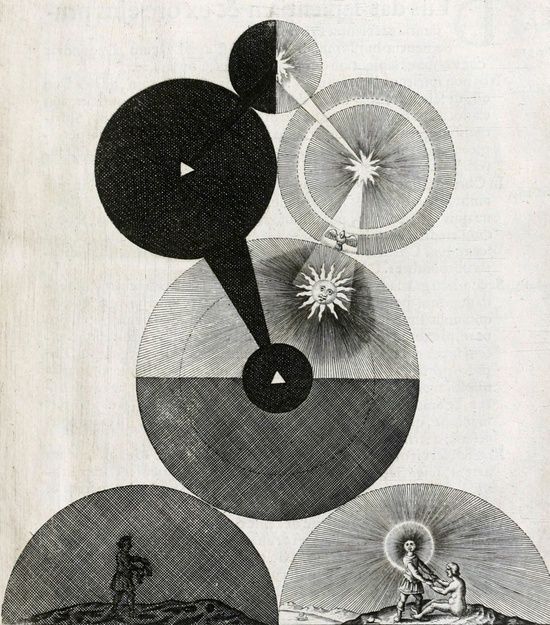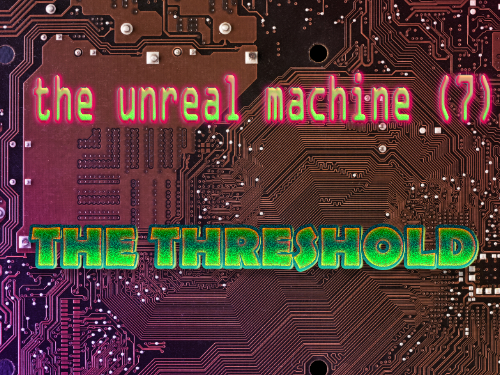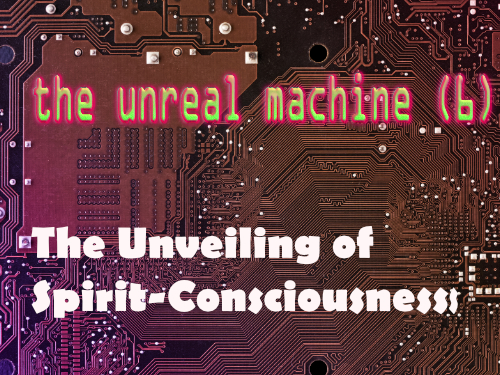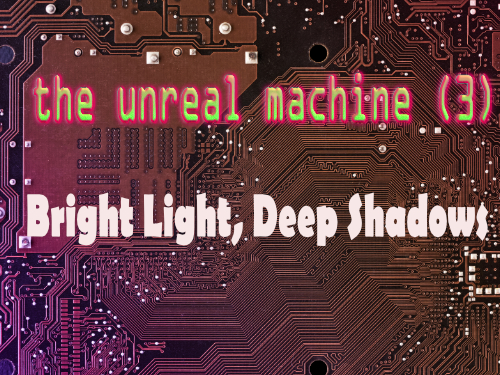Students achieving Oneness will move on to Twoness
Woody Allen
It often feels like many people today are coming around from chloroform, as if waking up from some drugged sleep wherein post-modernity was invented as an in-joke and then left lying around like a left-over alien jigsaw puzzle. Our new cultures are re-forming after their post-modernity heyday of scrambled identities and loss of meta-narratives. Things fall apart in order to come back together. William Irwin Thompson may remark that ‘Our new culture is not so much postmodern as postcivilized…an electronic meltdown of civilization in which barbarism and savagery boil up to the surface once again’1 yet what is boiling up is a different kind of savagery. Sure, there are the usual shenanigans going on over the world thanks largely to our fossilized political institutions, yet an altogether diverse dynamic is boiling up through our ‘electronic’ melting pot. The media theorist Marshall McLuhan noted that we are passing through an era that will require a need to gather up the broken fragments of a re-tribalized humanity. And that is the sense that hits us, as if the emerging global spaces are re-tribalizing us ‘out of the trees and into history,’ 2 and re-forming the species as a global tribe – all neon-lit for a new technologically assisted reality-set. As a species we have changed dramatically over the preceding epochs. As Terence McKenna notes,
We are no longer bipedal monkeys. We are instead a kind of cybernetic coral reef of organic components and inorganic technological components. We have become a force that takes unorganized raw material and excretes technical objects; we have transcended the normal definitions of humans. We are like an enormous collective organism with our data banks, our forecasting agencies, and our computer networks, and the many levels at which we are connected into the universe. Our self-image is changing; the monkey has been all but left behind and, shortly, will be left behind. 3
The new tribal cult is now morphing into the early birth pangs of a planetary civilization. The monkey mind is fading into obsolescence, although it’s aged adherents cling on desperately for their final gasps of solid air. This is the bifurcation point where we leap into the fiery cultural furnace to forge a new species consciousness, or wrangle with the old like an asphyxiated puppy. In the words of Thompson, we ‘either shift upward to a new culture of a higher spirituality to turn our electronic technologies into cathedrals of light, or we slide downward to darkness and entropy in a war of each against all.’4 This is the current medley we are at dance with, and yet I cannot personally see this sliding downward into an entropic darkness. The possibility is there for sure – has always been there – and yet the energy is perhaps too dynamic now to allow for a downbeat or dead rhythm. And so I see the ‘cathedrals of light’ being the more likely option, yet it won’t be an overnight construction. The great cathedral builders of old did not accomplish their masonic texts so easily. We are still attempting to bebop alongside the ‘droning Muzak inside an electropop mediocracy.’5 The neon tribes of the digital age are seeking alternative spiritual streams, and yet the search for ecstatic highs within the inner landscape are fraught with frauds and superficial vendors. The marketplace has never been as full as it is now, nor as diverse and tantalizing.
Ecstatic Highs
The sacred landscape has its counterparts and copycats; its true gold is mixed in with the false gold. A spiritual marketplace has arisen to satisfy, or con, the needs of the hungry awakeners. Gurus have cropped up – both indigenous and imported – to sprinkle the fairy dust of magical inducements and Samadhic temptations. And not just for the inner world either – people are now grooming themselves as ‘social media gurus,’ ready to offer guidance for the digital byways. Life coaching is also a relatively new term and profession, offering assistance for those people seeking clarity in their oh-so fuzzy lives. And did you know that life coaches claim you can earn ‘high 5 to 6 figures’ salary from life coaching? Some ways and means are clearly lucrative. As with anything, when a new idea, form, or energy emerges into the physical world, it soon gives birth to a range of appropriated offspring. Some of these forms become crystallized, such as in dogmatic belief systems, whilst others get commercialized, such as in the sweatbox of New Age swagger. The range and diversity of popular culture (especially westernized cultural forms) include the eclectic, consumerist, and commercial that offer exorbitant choice in the belief that more is good. This encourages some people to experiment, taste, and dabble with a rag-bag bunch of spiritual goodies in the hope that the resulting fusion will ‘do some good.’ Sometimes it is the case that people wish to receive in accordance to what they imagine spirituality to be. The following anecdote serves as an example of this. A visitor to a spiritual order, upon being received by the revered ‘spiritual Sheikh,’ suggested that the practices he was advocating belonged to a time in the past and were limited for a specific, targeted audience. Since such conditions no longer existed, the visitor pointed out, then what remained was merely an outer core – a spectacle. The old Sheikh, who was the head of the order, replied that
I have been here so long, and so have my ancestors, that we cannot change…we may well be wanted, and believed to be the possessors of secrets…we are here, after seven hundred years, not because of our value or viciousness, but because people want us. They want magic…many can follow a harmless path and feel better, elevated. That, in any case, is what they imagine spirituality to be.6
Popular culture has a great way of taking various forms and practices and utilizing them to reinforce mental, emotional, and physical conditioning and patterns of behaviour. It’s all part of what we may call the ‘One hundred aspirin effect’ whereby we miscalculate the dosage of something merely because we believe that more of a good thing will only bring us more good. If one has a headache we may take an aspirin, yet to take a hundred aspirins may do much more than just making the headache go away!
The ‘post-something’ stage we are currently riding – whether it be post-modernity or post-historic, and the rest – is bound to reify desires and urges into cultural totems for consumption. It’s all part of the flux, flotsam, and flow that goes with cultural trends. What’s significant about the present cultural candy store is that it has increasingly come to be dominated by spiritual and transformative memes. Quotations and phrases for inner transformation and well-being – once the tropes of Delphic maxims and prophetic pronouncements – are now slapped around as social media sound bites and Facebook photos. Anyone with a computer and free photo editing software can now mix and match their feel good totems in the transcendental marketplace. The counterfeit exists because the Real is out there, and the superficial pronouncements only strengthen the fact that the sacred, the transformational science, is now emerging through the common cultural sphere. What was once the purview, the secret domain, of the mystery schools is now seeping into mass circulation. This denotes that a particular stage of mass consciousness is coming into effect. The impulse to transcend – the Neoplatonist ascent, the gnostic awakening through the illusion, the rejection of monkish cave-dwelling activity – all point towards an internal longing now being played out in the tribal fields of a new spiritual smorgasbord.
Selling the supernatural has never been so lucrative. The Wal-Marts of America are now offering a well-stocked ‘gateway to a strange world of supernatural living and suburban sorcery’ which form ‘a full scale assault on the American mindscape.’7 A paranormal pop culture is now the norm, as esoteric streams seep into mass consciousness through spandex-clad mutants or cleverly woven sci-fi stories. The occult is no longer hidden but openly gallops through our living rooms through the new expansive digital byways that entrain our minds through the guise of entertainment. The new neon tribes of a digitally-enhanced world are responding to an altered sensorial reality-set. For the young generations especially, a new experience is being sought and longed for because they have been born into a different sensory environment. As media theorist Marshall McLuhan identified as far back as the nineteen-sixties, new cultural technologies ‘inevitably creates new environments that act incessantly on the sensorium.’ 8 We will experience new sensations as we try to adjust to the emerging sensory environments created by the global-digital technologies that McLuhan rightly identified as being extensions of our own nervous system.
Furthermore, as our current civilization shifts and gets re-made under the digitalizing revolution ‘we discover a tribal, integral awareness that manifests itself in a complete shift in our sensory lives’ as ‘a resonating world akin to the old tribal echo chamber where magic will live again.’ 9 As the digital-physical merger increasingly unfolds through our reality there may be forms of re-tribalization emerging through a range of mediums. Various forms of the participatory mystique and group identification have exploded through online networks, forums, chat groups, video conferencing, etc. The chaos magicians have even appropriated the digital realms for the simulation of the online ritual environment as they perform together through video streaming. And yet these re-formations are not only digital or anti-physical but are also re-sacralizing the energy of meetingness. As a rebellious affront to the hierarchical corporate world of modernity, the neopagan neon tribes of sacralized individuals are conjuring up their own carnivals and field gatherings. Within this ‘horizontal zone of becoming…The center is always decentered…the carnival fragments and distributes the power that the ladder concentrated into one supreme point. Nature speaks again, in a thousand networked tongues.’10
In recent years carnivals and art or music festivals have been springing up all over the globe. Some of these festivals of play and enactment are like a medieval mirror to the Rabelaisian world of ribaldry and protest. The continuation of this medieval outburst can be witnessed in southern Spain’s Andalusia province. The Andalusian capital, Cadiz, continues to host the lengthy carnivals of a folk culture filled with outrage, political-social angst, and ecstatic partying filled with songs and merry indulgence. These carnivals are mirrored in various towns dotted throughout the Andalusian landscape. Yet now these localized tribal merriments have gone global as the digitally-infused neon tribes of today are delving into trance, techno, burning art, and muddy fields.
Tribal Meetingness & Techno-Trance
From Glastonbury to Goa, the carnival co-opts Nature into a raving fusion of music, energy, vibe, and exuberant dance – a glocal Similarly, the Burning Man festival, held in the Black Rock Desert in Nevada in the US, is a community gathering of self-expression, art, architecture, exhibition, and exploration. Burning Man is about collage and juxtaposition – a post-post-modern melange of meshing collaborations that is a visual and aural feast. It is a public art house with no walls or roof, and plays with the disenchantment of an industrial modernity, recasting it into an alien landscape. Some may say it bears a similarity to the Eleusinian Mysteries, the greatest known public cult gathering of ancient Greece, where people took initiatory processions through the streets. Larry Harvey, one of the founders of Burning Man, has himself noted that the Nevada festival, like the mysteries, attracts a largely urban and sophisticated crowd, unlike some of the musical festival goers. Harvey feels that Burning Man is more about inward feelings than exuberant emotional release. Erik Davis, a US cultural journalist who has attended several Burning Man events calls it ‘…a promiscuous carnival of souls, a metaphysical flea-market, a demolition derby of reality constructs colliding in a parched void.’11 At the core of the Burning Man immersion is the cult of experience. As co-founder Larry Harvey says, ‘Beyond belief, beyond the dogmas, creeds, and metaphysical ideas of religion, there is immediate experience.’12 As in other wisdom traditions, the aim is not in doctrinal rules but in practical means for changing consciousness. As in tribal initiations, experience is the real teacher – a ritual process that can forge a new mode of social being. Such gatherings as those mentioned can provide a space for transformative experiences; for unexpected ‘happenings’ to occur that can trigger episodes of meaning. Such carnivals, festivals, and physical gatherings hold no overt claims for power or significance. Rather, they offer a space for creative intensity – for a new tribal sensorium – a ‘carnival of consciousness’ (to quote Davis) that celebrates the human visionary capacity. The rise in such festivals represents a sacred colonization – a re-tribalization – of a static space in the ordinary world that then dissolves back after its high-spirited outburst. After Burning Man, the Nevada desert goes back to its drifting sands; after Glastonbury the fields return to their grasses in breeze. Yet for a short moment of creative intensity these spaces play out a sacred tribal re-enactment that affects the human consciousness. In a way this is similar to how the ancient Mystery initiations – and the archaic minds of our ancestral cave painters – entered into transcendental states. Such festivals open up what Hakim Bey has called ‘temporary autonomous zones’ – uprisings of energy and ecstasy that merge emotions with euphoria and delight, contorting the waves of consciousness. They display a powerful assemblage of social, human, and creative forces that pierce against the bubble of protective reality and seek to take a peek outside of our collective dream. They show us a glimpse that, through each waking moment, we are experiencing a dissolution and re-enactment of the world – a reflection of our Bardo lives. In these moments, we experience the trance within the trance that is our transitory state. Such states of trance are also well known to the Goa music sub-cultures that grew up in Goa, India, in the seventies and eighties. The now famous Goa trance music scene grew out of the all-night music parties on the beaches of Goa, India, in the nineteen-seventies and eighties. At the time, imported music, on tapes and MIDIS, were sampled by resident ‘hippie’ DJs, as well as visiting DJs. This scene was first below the radar until it became globally known in the nineteen-nineties, by which time it attracted trance enthusiasts the world over. The early Goa crowd were often called ‘cyber hippies’ for their infusion of tech-music sounds and equipment (synthesizer and electronic sounds, and mixing desks), combined with Eastern mysticism and psychedelic culture. Goa Gil, an American-born musician who was one of the early Goa trance DJs, described his role by saying ‘I’m basically just using this whole party situation as a medium to do magic, to remake the tribal pagan ritual for the twenty-first century.’13 Goa Gil, through the trance-haze of his mind, is sharp enough to recognize exactly where this sacred music-fest is located – a magical ‘tribal pagan ritual for the twenty-first century.’ Similarly, another Goa trance musician, Raja Ram, when quizzed by Erik Davis, responded with – ‘You have to become a neuronaut to understand this music. We’ve gone from flint-rock to the moon landing in a few thousand years, and now we’re on the edge of the world opened up with information machines. This is a new inner space we’re exploring.’14 The Goa scene was clearly a physical proximity for exploring the inner space through a merging of machine technology with electronic beats and swirls – the perfect collusion for the sacred vibe to be seeded. It marked a journey of modernity from the ecstatic religious dervish dancing of India to the interstellar trance beats of a cyber-tech-trance imported influx from the western shores. European hipsters descended into Goa donned in sneakers and flared jeans as a counter-insurgency against the corporate world of the industrial consciousness. They trance-swirled and gyrated through their opening inner landscapes in a desire for a small grasp of the celestial firmament. As Davis aptly describes it: These melodies and beats are created, recorded, and reproduced in the digital ether of electronic circuitry…these transient refugees from the First World have poached the info tech that’s speeding up the march of progress and made an abrupt about-face towards the archaic…Technology loves connection, so they sync it with the ancient wheel of the heavens.15 This represents one aspect of the emergent energy and consciousness that belongs to the burgeoning sacred landscape today. It shows how technology is merging with a new vibration (music) to sacralize a part of the human consciousness (inner spaces) that had hitherto remained unleashed. It is the Mozart for the new millennium. And this combination of external and internal technologies is all meshed with what can be termed as the digital gnostics. Digital Gnostics As I touched upon earlier, the late 20th century saw an explosion in countercultural spirituality. As part of the emerging experimental playscape there arose an assortment of techniques, from kundalini-catalyzing yoga to psychedelic pseudo-shamanic head trips. A plethora of new ‘spiritual/sacred techniques’ filled the consumerist seeker’s shopping basket – what Mircea Eliade, a Romanian historian of religion, referred to as ‘techniques of ecstasy.’ These techniques later began to combine with the new ‘machine vocabulary’ to produce such systems as meta-programming the human bio-machine (Timothy Leary, Robert Anton Wilson). In a similar way, noted scientist John C. Lilly referred to his system as Programming and Metaprogramming in the Human Biocomputer. This new affinity for digitally inspired transcendence marked the arrival of a ‘sacred mechanics’ that merged the machine with the sacred. It seemed to be no mere accident that many of the spiritual advocates who venerated the old codes of the sacred were now embracing the new programs offered by technology. A high percentage of self-confessed modern pagans, or neo-pagans, when surveyed by reporter and fellow pagan Margot Adler – in her work Drawing Down the Moon: Witches, Druids, Goddess-Worshippers, and Other Pagans in America – were found to be involved in computer and technology fields. Modern pagans were also, it seemed, adept video gamers. The stream had flowed from the witches circles of old to the new digital spaces of sorcery in virtual circles. There is little doubt that a digital culture exists that thrives on neo-paganism and a mix of the magical and the mystical. A thorough survey of this eclectic space was eloquently expounded by Erik Davis in his classic work Techgnosis: myth, magic and mysticism in the age of information (1998). The spirit now appears to be infusing our playful pastimes in the virtual domain. You could wander through an excess of video games now on the market and many of them would convey Gnostic or sacred-spiritual themes. Apart from the obvious Matrix video games (Enter the Matrix, Matrix Online[ii]), there are the Final Fantasy franchise, the Xenogears and Xenosago series, Ghost in the Shell: First Assault, and countless others that are beyond the scope of this brief foray. The notion of self-transcendence in a reality-construct is ideally suited to the format of the digital-virtual world of video-gaming. As Davis notes, ‘Gnosticism creates a space to step back and critique the dominant situation, a space of visionary alienation that reveals the cracks in the surface of apparent reality.’16 Video gaming puts the gamer in the centre of this ‘apparent reality’ and from which they are challenged to explore, prevail, attain, and ascend. Gamers participate with their realities – they are not simply observers. This elevates the partnership into the transcendent realm of play. Both our physical external reality and our gaming realities are closely entwined in a fortuitous web. The latest in scientific research – our quantum sciences where perceived reality is ‘collapsed into being’ from observation – reveal a gnostic tinge to what we consider to be reality. In the virtual gaming worlds our gods are challenged, and often found to be lacking – they are the Gnostic demiurges that try to throw a veil over our understanding. These demiurges are like the never-seen game designer, whose design plans are carefully and creatively hidden within the game-play. To reveal the plans of the designer/creator could potentially spoil the game – or create a short-cut to its end goal and destiny. Gamers keep a close attention upon the signs and clues in the game in the hope of figuring out the in-built road map; similar to how kabbalists sought the secret hidden in knowable patterns of numbers and letters. Our digital topographies ‘are rife with angels and aliens, with digital avatars and mystic Gaian minds, with utopian longings and gnostic science fictions, and with dark forebodings of apocalypse and demonic enchantment.’17 In such digital spaces we are often urged to become our own gods through trial and error, or augmentation. In the words of philosopher Michael Heim – ‘What better way to emulate God’s knowledge than to generate a virtual world constituted by bits of information. Over such a cyber world human beings could enjoy a god-like instant access.’18 Through such demiurge access we can upgrade our bodies and minds in order to overcome the adversities, or experiment time and again like some reincarnating cycle. Gamers believe that they have free will and intention as they move through the narrative game-play, accepting the consequences to their actions. They deny the artifice of the reality in which they are immersed. The original sin of video games, according to gaming scholar Liel Leibovitz, is ‘reminding players that they’re nothing but pawns in a hermetically sealed universe crafted by an unknown creator, playing by rules they will never entirely understand.’19 Despite some of the criticism thrown at video games (for example, their depiction of violence), many games offer a platform for mystical-philosophical enquiry, cognitive puzzles, creative problem-solving, and imaginative world building. It is little wonder then that the computer-technology industry is filled with science-fiction fans and fantasy geeks who cut their teeth on such masters as Isaac Asimov and Arthur C. Clarke, as well as the philosophies of Pierre Teilhard de Chardin. There is something inherently magical about our technologies of connection and communication, which are now lending their hand to our unfolding cultural topographies. A new and different kind of sacred landscape is under construction – stay tuned. References 1 Thompson, William Irwin (1998) Coming Into Being: Artifacts and Texts in the Evolution of Consciousness. New York, St. Martin’s Griffin, p1 2 McKenna, Terence (1991) The Archaic Revival. New York, HarperCollins, p167 3 McKenna, Terence (1991) The Archaic Revival. New York, HarperCollins, p166 4 Thompson, William Irwin (1998) Coming Into Being: Artifacts and Texts in the Evolution of Consciousness. New York, St. Martin’s Griffin, p10 5 Thompson, William Irwin (1998) Coming Into Being: Artifacts and Texts in the Evolution of Consciousness. New York, St. Martin’s Griffin, p2 6 Grant, John (1992) Travels in the Unknown East. London, Octagon Press, p43 7 Metcalfe, David (2013) ‘Satan’s Target: Your Mind – Supernatural Living in the American Marketplace’, United Academics Journal of Social Sciences, Volume 3 Issue 17 8 McLuhan, Marshall; Fiore, Quentin (1968) War and Peace in the Global Village. New York, Bantam Books, p136 9 McLuhan, Marshall; Fiore, Quentin (1968) War and Peace in the Global Village. New York, Bantam Books, p24 10 Davis, Erik (2010) Nomad Codes: Adventures in Modern Esoterica. Portland, OR, Verse Chorus Press, p160 11 Davis, Erik (2010) Nomad Codes: Adventures in Modern Esoterica. Portland, OR, Verse Chorus Press, p317 12 Cited in Davis, Erik (2010) Nomad Codes: Adventures in Modern Esoterica. Portland, OR, Verse Chorus Press, p320 13 Cited in Davis, Erik (2010) Nomad Codes: Adventures in Modern Esoterica. Portland, OR, Verse Chorus Press, p52 14 Cited in Davis, Erik (2010) Nomad Codes: Adventures in Modern Esoterica. Portland, OR, Verse Chorus Press, p48 15 Davis, Erik (2010) Nomad Codes: Adventures in Modern Esoterica. Portland, OR, Verse Chorus Press, p58 16 Davis, Erik (2010) Nomad Codes: Adventures in Modern Esoterica. Portland, OR, Verse Chorus Press, p157 17 Davis, Erik (1998) Techgnosis: myth, magic and mysticism in the age of information. New York, Three Rivers Press, p5 18 Cited in Noble, David F. (1999) The Religion of Technology: The Divinity of Man and the Spirit of Invention. London, Penguin, p159 19 Leibovitz, Liel (2013) God in the Machine: Video Games as Spiritual Pursuit. West Conshohocken, PA, Templeton Press, p14 [i] A recent word whose etymology reflects or characterizes both local and global considerations. [ii] The massively multiplayer online role-playing game Matrix Online was discontinued in 2009.




